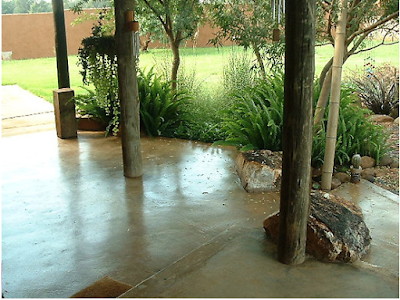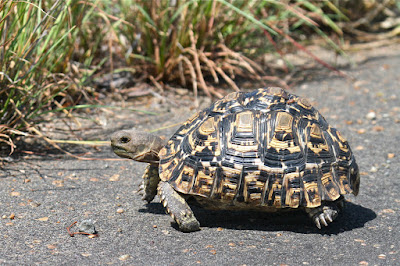Having a backyard means getting out to enjoy the sunshine and fresh air with family and friends. Braaiing (barbequeing), lounging by the pool, planting flowers in the garden, etc. However,what usually comes with beautiful nature and fresh air, is the variety of insects and more particularly, BEES! The spring, summer and early autumn is a busy time for this wide variety of yellow stripey things. Bumblebee, Dirt Dauber, Cicada Killer, Yellow Jacket, etc … Cicada Killer? Who knew there were so many different kinds (but you just gotta love 'em all!) …where are they lurking? and are they dangerous? Let’s find out…
Carpenter Bee
 Acts like it’s hot shit, but can’t actually hurt you – Has no concept of what glass is – Lives in your fence – Flies aggressively to try to scare you away.
Acts like it’s hot shit, but can’t actually hurt you – Has no concept of what glass is – Lives in your fence – Flies aggressively to try to scare you away.These guys are primary pollinators and frequent visitors to suburban flowerbeds! When threatened, they show aggression by hovering in front of people/faces, but rarely sting. In fact, in many species of carpenter bees, the males have no stinger at all. The only real threat they pose is to wood structures because carpenter bees do not live in nests or colonies. They bore into wood and tend to prefer decaying or weathered wood, as opposed to new or painted wood.
Honeybee

Is the bee that needs help the most – Excellent pollinator – Very friendly – Can only sting once.
These little guys are not usually a threat – they’re just looking for nectar to make honey. A hive, however, should be dealt with especially if it’s too close to your home. If you have a bee colony you want to get rid of, an exterminator is NOT the best answer! Instead, contact a bee removal expert who can capture the queen and put the colony to good use! Honeybees rarely sting unless provoked (usually if they feel the colony is threatened) Honey bees can only sting once and then die shortly after.
These slow flyers are often seen visiting flowers in a garden. Most of these fuzzy, oversized bees are black and yellow, though some also have a tint of orange. Bumblebees live in small colonies, and they defend their nests quickly by stinging and pursuing threats to save their hives. They build their nests out of pollen clumps, usually in the ground or a dense grass clump. Their stings are known to be painful -however, they rarely sting while rummaging in flowers, just in defense.

These little guys are not usually a threat – they’re just looking for nectar to make honey. A hive, however, should be dealt with especially if it’s too close to your home. If you have a bee colony you want to get rid of, an exterminator is NOT the best answer! Instead, contact a bee removal expert who can capture the queen and put the colony to good use! Honeybees rarely sting unless provoked (usually if they feel the colony is threatened) Honey bees can only sting once and then die shortly after.
Bumblebee
Also pollinates stuff really well – So fat it shouldn’t be able to fly – Will let you pet it without getting agitated – Actually a flying panda!These slow flyers are often seen visiting flowers in a garden. Most of these fuzzy, oversized bees are black and yellow, though some also have a tint of orange. Bumblebees live in small colonies, and they defend their nests quickly by stinging and pursuing threats to save their hives. They build their nests out of pollen clumps, usually in the ground or a dense grass clump. Their stings are known to be painful -however, they rarely sting while rummaging in flowers, just in defense.
Hoverfly

Wears yellow stripey uniform to scare you – Actually can’t do anything to you – Hangs out in fields – Follows you if it likes you.
Hoverflies look like small bees and wasps. They are the helicopters of the insect world, often seen hovering in the air, darting a short distance, and then hovering again. The hoverfly doesn’t have a sting in its tail and is completely harmless. Their bright color is to trick predators, (and you!) into thinking they can sting.

Hoverflies look like small bees and wasps. They are the helicopters of the insect world, often seen hovering in the air, darting a short distance, and then hovering again. The hoverfly doesn’t have a sting in its tail and is completely harmless. Their bright color is to trick predators, (and you!) into thinking they can sting.
Paper Wasp

Looks scary but will only attack if provoked – Sting hurts like hell – Will chase you if you swat at it – Has no concept of your personal space!
Paper wasps feed on nectar and insects, which technically make them a beneficial insect! They will rarely sting unless you get to close to their umbrella-shaped open-face nests. Nests are often found hanging from twigs and branches of trees and shrubs, as well as porch ceilings, door frames, eaves, deck floor joints, etc. Their sting is known to be more painful than honeybee stings and can produce reactions in those allergic to their venom.
Paper wasps feed on nectar and insects, which technically make them a beneficial insect! They will rarely sting unless you get to close to their umbrella-shaped open-face nests. Nests are often found hanging from twigs and branches of trees and shrubs, as well as porch ceilings, door frames, eaves, deck floor joints, etc. Their sting is known to be more painful than honeybee stings and can produce reactions in those allergic to their venom.
Yellow Jacket
Wants your food and will fight you for it – Never leaves you alone – Will sting you just for the hell of it – Is just an asshole!
These are highly aggressive insects! They develop large colonies that are intensely defended. As a result, people can be swarmed in a matter of minutes, often getting stung hundreds of times. These insects are especially fond of hunting in and around trash piles and garbage cans. They are a common invader to outdoor picnics! This still doesn't mean you should kill them, just flee!

These are highly aggressive insects! They develop large colonies that are intensely defended. As a result, people can be swarmed in a matter of minutes, often getting stung hundreds of times. These insects are especially fond of hunting in and around trash piles and garbage cans. They are a common invader to outdoor picnics! This still doesn't mean you should kill them, just flee!
Cicada Killer

Looks like satan's nightmares – Exclusively eats cicadas – Can sting you but usually won’t – Still pretty terrifying.
Cicada killers are only threatening if … well, if you’re a cicada. The cicada killer is a solitary type of wasp that’s often mistaken for a hornet. They’re most commonly found hunting cicadas in trees or burrowing in soft ground. Although the females have stingers, they usually reserve it for cicadas. Female cicada killers will only attack humans if they are provoked.

Cicada killers are only threatening if … well, if you’re a cicada. The cicada killer is a solitary type of wasp that’s often mistaken for a hornet. They’re most commonly found hunting cicadas in trees or burrowing in soft ground. Although the females have stingers, they usually reserve it for cicadas. Female cicada killers will only attack humans if they are provoked.
Dirt Dauber

Almost never stings anything unless it's a spider – Builds nests in the ground – Hoards spiders in said nests – Coolest looking of the wasps.
Daubers are solitary insects most known for their habit of building nests out of the mud. They are capable of stinging, however unlikely to do so – even when disturbed (aaaaaw!). They’re not aggressive, and they do not defend their nests as social wasps do.
However, if you do get stung, you can find out what to do HERE.
Daubers are solitary insects most known for their habit of building nests out of the mud. They are capable of stinging, however unlikely to do so – even when disturbed (aaaaaw!). They’re not aggressive, and they do not defend their nests as social wasps do.
However, if you do get stung, you can find out what to do HERE.





































